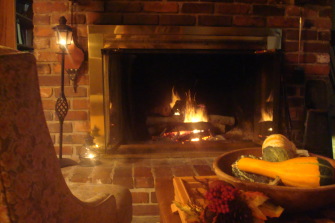Fireplace Safety – 7 Tips
 With natural gas and propane prices continuing to rise, you’ll likely be looking to the old fireplace this winter to help cut your home-heating bills. But before you spark up the logs, take heed that fireplaces and chimneys are involved in 42 percent of all home-heating fires. So first make sure yours is up to snuff by following these seven safety tips.
With natural gas and propane prices continuing to rise, you’ll likely be looking to the old fireplace this winter to help cut your home-heating bills. But before you spark up the logs, take heed that fireplaces and chimneys are involved in 42 percent of all home-heating fires. So first make sure yours is up to snuff by following these seven safety tips.
Hire a Chimney Sweep
The National Fire Protection Association recommends that chimneys be swept at least once a year at the beginning of the winter to remove soot and debris. Find a certified sweep in your area via the Chimney Safety Institute of America.
Check for Damage
In addition to cleaning, a chimney sweep should inspect the chimney structure for cracks, loose bricks, or missing mortar. Chimney liners should also be checked for cracking or deterioration.
Cap the Chimney
A cap fitted with wire-mesh sides covers the top of the chimney and keeps rain, birds, squirrels, and debris from entering. Replace or repair a cap that’s missing or damaged.
Burn Seasoned Hardwoods
Choose dense wood, such as oak, that’s been split and stored in a high and dry place for at least six months. Green wood and resinous softwoods like pine produce more creosote, a flammable by-product of combustion that can build up in the chimney.
Don’t Overload
Small fires generate less smoke, thus less creosote buildup. Also, a fire that’s too large or too hot can crack the chimney.
Build it Right
Place logs at the rear of the fireplace on a metal grate. Use kindling, rather than flammable liquids, to start the fire.
Use a Spark Guard
Prevent errant embers from shooting out of the firebox with a mesh metal screen or glass fireplace doors. A guard in front of an open flame is especially important when the room is unoccupied.
-From BobVila.com
